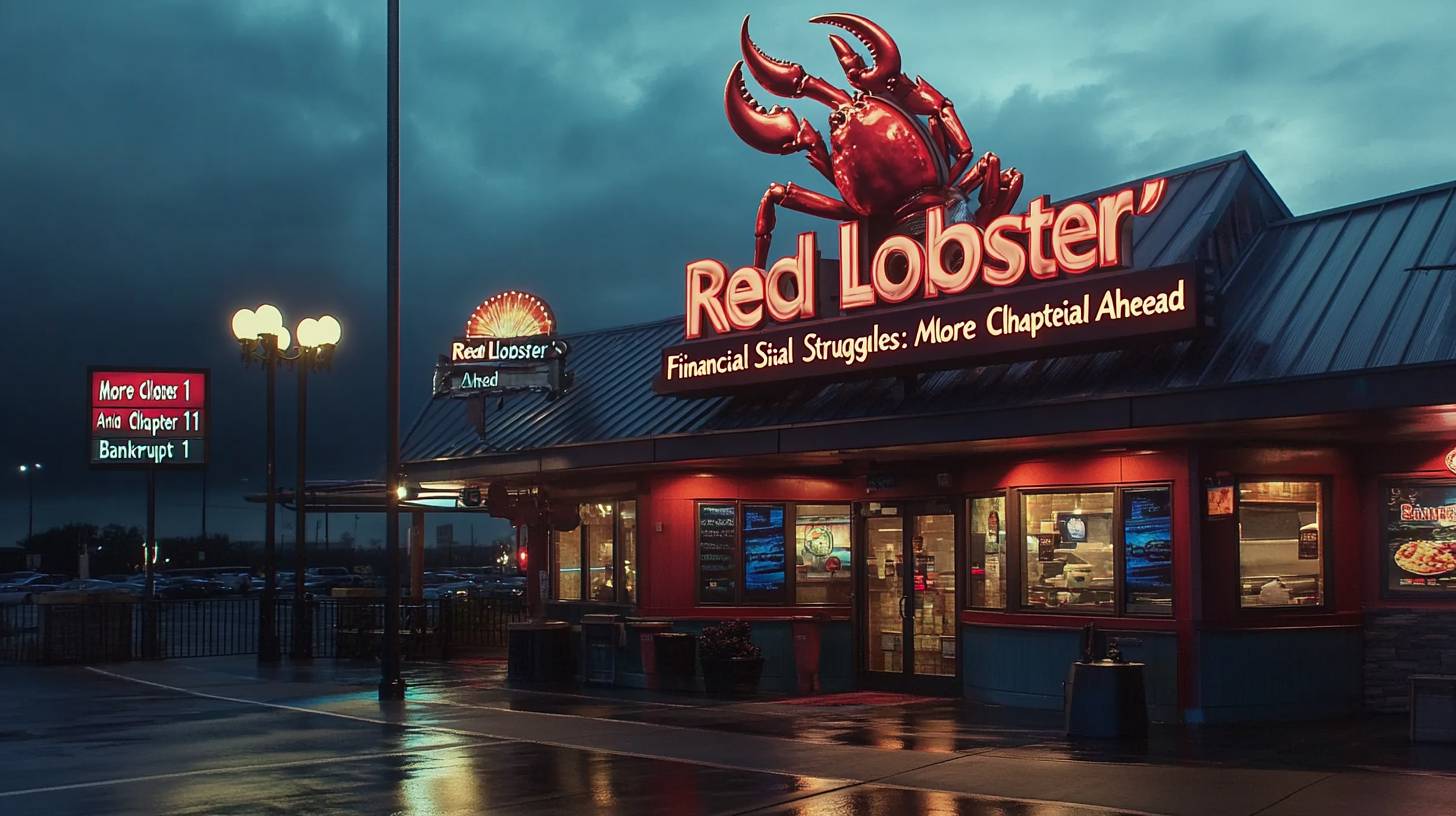
Red Lobster’s Bankruptcy and Financial Difficulties
Red Lobster, a prominent player in the casual dining industry, has faced serious financial hurdles, culminating in its Chapter 11 bankruptcy filing in May. This filing was intended as a strategic initiative to reorganize the company’s finances and operations for long-term viability. Yet, the journey to stabilization has proven to be quite challenging.
To reduce expenses and enhance operational efficiency, Red Lobster opted to close 99 restaurants across 28 states. These closures are not temporary; the chain promptly auctioned its kitchen equipment from the shut-down outlets, indicating a definitive departure from those regions. The closures stemmed from the difficult understanding that these locations were unlikely to become profitable due to high operational expenses and the chain’s focus on providing value in the sit-down seafood dining market.
The financial troubles facing Red Lobster are exacerbated by the reality that it cannot simply increase prices to counter rising expenses. The restaurant’s business model relies on delivering reasonable seafood meals, restricting its capacity to transfer heightened costs to their patrons. This situation has become particularly challenging where demand for commercial real estate has inflated rent prices, making it progressively harder for the chain to sustain profitability.
In its bankruptcy process, Red Lobster requested concessions from landlords for over 100 of its remaining venues. These requests extended beyond simple rent reductions; the company also sought waivers on back rent, underscoring the gravity of its financial plight. Even with these attempts, the chain continues to confront a strenuous path as it deals with the intricacies of bankruptcy while trying to find a viable way forward.
Further adding to the unpredictability, Red Lobster has recently disclosed that RL Purchaser LLC, a stalking horse bidder comprised of the chain’s lenders, will become its new owner. While this development brings a spark of hope, it simultaneously emphasizes the fragile status of the company’s finances. As Red Lobster navigates the hurdles of restructuring under Chapter 11, its future hangs in the balance.
Ongoing Store Closures and the Chain’s Future
As Red Lobster progresses through Chapter 11 bankruptcy proceedings, the trajectory of the chain remains uncertain. The recent takeover by RL Purchaser LLC, a group representing the chain’s primary creditors, highlights the seriousness of the circumstances. This move represents a strategic effort by creditors to protect their investments by gaining control of the company and guiding it toward a more sustainable operational structure.
Nonetheless, the upcoming journey is laden with obstacles. The company has initiated motions in the U.S. Bankruptcy Court for the Middle District of Florida to terminate leases on an additional 23 establishments. These closures form part of a wider plan to lower overhead and concentrate on markets with a greater likelihood of achieving profitability. The timing of these closures is vital, as Red Lobster seeks to avert accruing more rent obligations by exiting those locations before the end of August.
For Australian investors and stakeholders, the situation at Red Lobster serves as a stark reminder of the inherent risks in the casual dining sector, particularly for chains operating on narrow profit margins. The ongoing reductions in locations and the restructuring initiatives underline the necessity for adaptability within a fast-evolving market landscape. As the chain continues to downsize, the critical question persists: will these recent initiatives be sufficient to stabilize the business, or will additional drastic measures be required?
Despite the ambiguity ahead, Red Lobster is taking steps to reassure its clientele. The chain has rolled out a new marketing campaign featuring rapper and reality star Flavor Flav, proudly proclaiming “Yes, We’re Open” on its website. This approach is designed to counteract the negative exposure related to the closures and bankruptcy, striving to sustain customer loyalty throughout this tumultuous phase.
However, the stark truth remains that over 100 Red Lobster locations have already been permanently closed, and the future of the pending 23 locations depends on the forthcoming bankruptcy court session. The outcome of this hearing will be crucial for the chain’s future, as it will either set the stage for a streamlined, more concentrated operation or indicate the necessity for further contractions.

